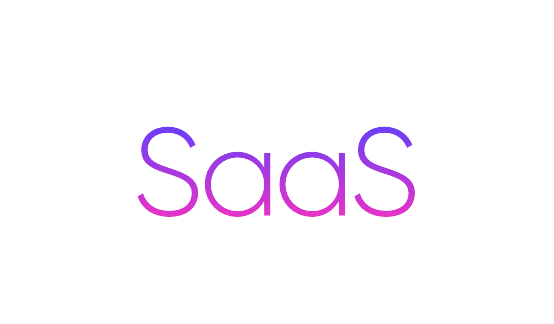In the coming decade, Digital Transformation, Artificial Intelligence(AI), IoT, Industry 4.0, smartphone, broadband, and the growth of Generation Z will all have a huge effect on how individuals work. Younger, digital-native generations see work not as a place where you go, but in terms of what they do with their time.
Future of Workplace Technology
Across the globe, due to the COVID-19 pandemic, we are experiencing a major change in every area of our lives. The way we connect, work, and lead our lives has undergone a dramatic shift. We are facing many situations on the job front, which are poised to become the new standard. Technology can play a crucial role in the way we operate as we move forward, literally revolutionizing space.
As governments continue to ease constraints and companies begin to run normally, here are some of the top developments in digital communication technology that are likely to change the future of work.
In order to make 2021 a profitable, innovative, and communicative year, we have kept a close eye on the growth of the best in interactive technologies and are ready to share the six Workplace Technology Trends that SMBs should follow.
A massive increase in IoT-enabled solutions:
Due to factors such as improved lifestyles and the need to remain virtually linked, there is an increase in demand for smart devices across the world. Smart products that can be operated by voice commands or remote commands with minimal physical contact are also growing in need. In the changed world after COVID, IoT adoption is likely to get a big boost from remote monitoring of patients in hospitals to remote operation of equipment in a factory.
Artificial Intelligence and Machine Learning Communication:
For the future, communication solutions such as Artificial Intelligence and Machine Learning (AI / ML) are essential. AI / ML will become an integral part of communication networks, whether it is for learning to direct traffic using the most effective route or to dynamically change network parameters to provide the most optimal user experience in a given area. For example, as a shared spectrum is used by wireless networks, AI / ML systems can control the load on multiple networks without interruption. AI / ML systems can help networks with the option of choosing the most suitable parameters to deliver content based on the data type, network load, and number of users. These systems can help to greatly improve user experiences.
Pacing towards 5G network:
Despite certain relaxations in most parts of the country, as many companies are moving towards a job from home culture, there is an increasing demand for faster and higher bandwidth networks. 5G, the next-generation network built with an “Application Oriented” architecture, delivers a superior service class based on the network’s ‘Slice’. This applies to a specific form of services such as IoT, low latency applications such as Tele-Medicine, and more, making its adaptation necessary to support seamless remote work.
Usage of Shared Spectrum:
In a post-COVID-19 environment, it is a given reality that there would be an upsurge in content consumed on mobile devices. This is primarily seen in the use of team meeting video conferencing platforms, attending online seminars, or watching a leisure and entertainment video. Video occupied over 70 percent of the content transmitted over mobile networks before the pandemic hit the country. This phenomenon is bound to exponentially increase and may overwhelm mobile networks that have not been built to manage the consumption of huge quantities of data. This causes the jamming of mobile networks and slows down streaming and computer downloads. Communication providers would use a “shared” spectrum to avert network jamming and create a superior user experience. There are different types of choices for shared spectrum available. Dynamic shared spectrum, such as TVWS and CBRS, provides additional coverage and has the potential to provide the unconnected population with connectivity. Spectrum sharing can be an option for two different networks, such as broadband and broadcast networks. Users can enjoy hassle-free video consumption, for increased productivity, through the use of 5 G broadcast, which is a convergence of the two spectrums and a 5th generation data transmission innovation.
Massive surge in E-Commerce:
Online shopping for household goods, clothes, and books is experiencing a huge surge. And a large demand for online or mobile payment solutions and services comes with it. More online banking services and other online financial services, such as savings, have started to be used by people. Overall, in the post-COVID age, more online financial transactions and trade will take place. With the use of technologies such as VSAT terminals, UHF frequency-based rural wireless broadband solutions, Wi-Fi, etc., these updates will force more rapid adoption of communication infrastructure investment in rural and unconnected areas.
Virtual Conferences are emerging
Companies are opting for webinars and virtual summits with an emphasis on preserving social isolation and limited human interaction. In the new normal, the industry is all set to see a spike in advertisements, product launches, etc., virtual meetings, and conferences. In the last few months, many video conferencing systems have already seen a huge rise in use as workers remotely communicate. Events will continue to take place online, from internal meetings with restricted participants to a full-fledged webinar or conference where thousands of individuals will attend. This latest trend is likely to continue for a long time to uphold the etiquette of social distancing and ensure the safety of everyone.
Businesses have plenty to look forward to as digital technology is poised to change our lives in a post-COVID-19 environment with rapid development in the growth of emerging technologies.
Across the globe, due to the COVID-19 pandemic, we are experiencing a major change in every area of our lives. The way we connect, work, and lead our lives has undergone a dramatic shift. We are facing many situations on the job front, which are poised to become the new standard.











